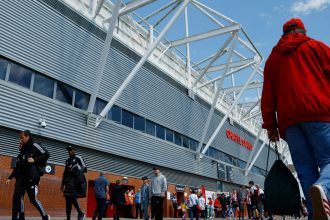da aposte e ganhe: No country has thrown up a more mesmeric variety of spin bowlers thanIndia
da 888: Partab Ramchand06-Oct-2001No country has thrown up a more mesmeric variety of spin bowlers thanIndia. And it has not been just the variety that has fascinatedcricket connoisseurs the world over, but how the bowlers have managedto be among the greatest in contemporary cricket. Vinoo Mankad in histime was the finest left arm spin bowler in the world, Subash Guptethe best of his type, while the spin quartet, of course, re-wrote thehistory of spin bowling.
The best batsmen the world over have always admitted that theircricketing education has not been complete without successfullytackling the Indian spin bowlers, particularly on their home wickets.In their own way, they have bewildered batsmen as much as the mostfearsome fast bowlers have terrorized them.
The strength of this mode of attack has more than covered up thegeneral lack of pace bowling in Indian cricket. Even when, for achange, Kapil Dev held sway for about a decade and a half, Indianspinners were still good enough to win matches for the country.The best batsmen the world over have always admitted that their cricketingeducation has not been complete without successfully tackling theIndian spin bowlers, particularly on their home wickets. In their ownway, they have bewildered batsmen as much as the most fearsome fastbowlers have terrorized them.The tradition of the best of Indian spin bowling can be traced backalmost 100 years and to Baloo Palwankar. Today he is acknowledged asthe first great Indian spinner. He had to come up the hard way,fighting the caste considerations of those days.Born in Bombay in 1876, Palwankar was an `untouchable’ (Gandhiji latercalled them Harijans) and worked as a groundsman at a club for apaltry salary of three rupees a month. His low caste status meantthat, despite being a gifted bowler, he could not play for the HinduGymkhana, a prestigious Bombay club at the time. The Parsees, who hadplayed a notable role in popularizing the game in the country in thelate 19th century and early 20th century, gave him the opportunity toplay. Subsequently, when the Hindus discovered that there was acertain magic in his fingers, he was quickly made a member of the cluband later went on to captain the Hindus!Prof DB Deodhar was of the view that Palwankar was as good a bowler asWilfred Rhodes and Hedley Verity. On the all-India tour of England in1911, the gifted left-arm spinner took over 114 wickets at theniggardly average of 18.86.He played first class cricket for the Hindus in the Quadrangular till1921 and his overall figures serve to show what a good bowler heundoubtedly was. During his career, which started in 1905, he took 179wickets at 15.21 apiece. He died in Bombay in 1955 and now has a roadnamed after him in the metropolis.As Indian cricket came of age in the 20s and 30s, the focus shifted topace in the form of Mohammad Nissar and Ladha Amar Singh. With themedium-paced cutters of CK Nayudu and Jahangir Khan for support, therewas very little scope for spin to succeed.The one spinner who could just about get a place in the Indian side atthis time was Rusi Jamshedji. He was born in Bombay in 1892 but madehis first-class debut only at the age of 30. A left-arm spinner of theorthodox school, he played with some success in the two unofficialTests against Arthur Gilligan’s MCC team of 1926-27, but he made hisTest debut only against Douglas Jardine’s team seven years later.By this time he was 41 and still remains the oldest Indian player tomake his debut. He did well enough though, picking up three wicketsfor 137 from 35 overs. That remained his only Test and under theshadow of the well-established and immensely successful pace duo ofNissar and Amar Singh, there was never any chance for a spin bowler tobe a force to reckon with an interesting fact given the acutescarcity of pace bowlers in later years.Given this scenario, it is not surprising that Mushtaq Ali was pickedfor his first couple of Tests primarily as a left-arm spin bowler. ButIndia’s best bet around this time was probably Cottari Subbana Nayudu,the younger brother of CK. Born in 1914 at Nagpur, Nayudu was a rightarm leg-spin-cum-googly bowler who spun the ball fiercely.A bundle of energy, he made his firstclass debut in 1931, his Testdebut in England in 1936, and between 1934 and 1961 in the RanjiTrophy had a bag of 295 wickets a record until VV Kumar broke it in1970-71.He was a prominent member of the formidable Holkar side of the 40s and50s and took 14 wickets in a match once, besides twice exceeding 30wickets in a season, which, given the limited opportunities in thosedays, was a commendable feat. He was also a batsman capable of gettingfour first class hundreds. But somehow his career for India proveddisappointing, as illustrated by his figures in 11 Tests two wicketsat 179.50 apiece.Nayudu still holds the record of bowling more overs in a match thananyone else. In the 1944-45 Ranji Trophy final against Bombay, he sentdown 152.5 overs 917 deliveries in all to bag 11 wickets. By thetime Nayudu had played his last Test against England in 1951-52, Indiawere on the verge of discovering their first outstanding spin trio.






